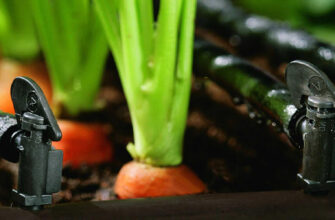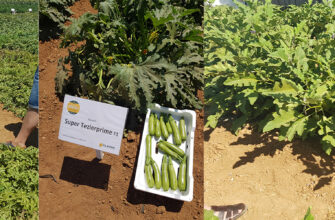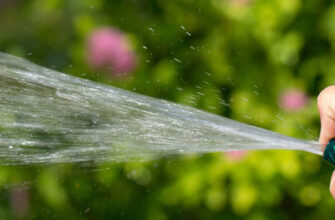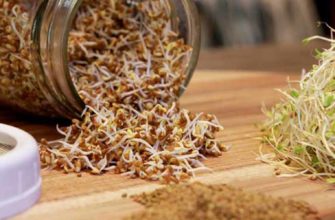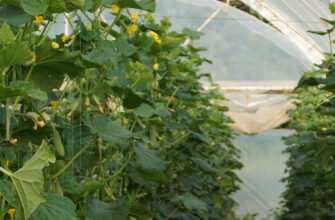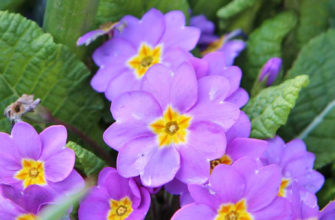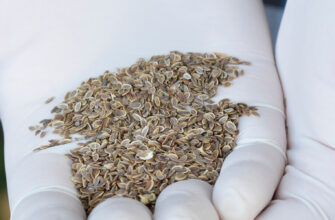Among plant irrigation methods, drip irrigation has rightfully taken a leading position.
Advantages and components of a drip irrigation system
In household plots, hose irrigation and sprinkling remain the main methods, but the shortage of clean water is increasingly forcing many to turn to drip irrigation.
For example, in Crimea, in many areas with wells, 0.5–1 m³ of water accumulates per day. Naturally, this amount is not enough to irrigate a large greenhouse (200–400 m²) using a hose, but it is quite sufficient through drip lines.
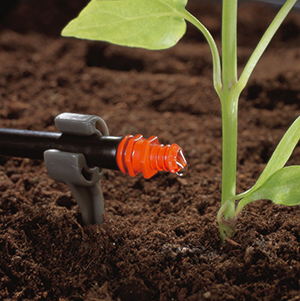
A similar situation exists in Kherson, Odessa, Mykolaiv regions, and many areas of Donbas, where water is disappearing from wells and even shallow boreholes due to mining activities.
The same applies to Australia, South Africa, and several countries in Asia and Africa, where rainwater is collected, and drinking water is prohibited for technical use. In 20–30 years, one-third of the world’s population will face water shortages.
In fact, this became the main reason for developing the most economical method of conserving water resources – irrigation through drippers.
But this is not the only advantage of drip irrigation.
Besides saving water, it does not cause erosion (soil washout) even on steep slopes, allows fertilizers to be delivered through closed pipelines together with water, and most importantly, creates an optimal balance between soil air and mechanical structure.
With hose irrigation and sprinkling, all air is displaced by water, and when drying occurs, a soil crust forms.
Another advantage of drip irrigation is the ability to work in the field during and after irrigation, whereas with hose watering, you have to leave the area and then wait for it to dry.
Thus, the use of drip irrigation allows for increased crop yields (by optimizing water supply), water savings, and automation of the irrigation process.
A drip irrigation system consists of 4 elements. The first two are:
- Water intake structure (somewhere to take water from).
- Pump and filtration equipment (abbreviated as PFE).
During installation and design, specialists need to determine whether the water from your well (or borehole) requires cleaning from sand or clay particles, consider its hardness, etc.

This affects how many filters are needed—whether a 3-stage filtration system or a 5-stage one. Because of this, the price during design can vary greatly.
Often, there are cases when people know how much it costs to install for someone they know and base their own budget on that figure, but it turns out to be different. The reason lies in different levels of water turbidity or hardness.
It is important to contact companies that have a license for installation and design work. The desire to save money and purchase a system on the market without filters leads to the fact that over time the openings in the drip lines will become clogged with sand particles, fertilizer sediment, or deposits on the walls.
And this is one of the drawbacks of drip irrigation — the need for thorough filtration.Therefore, do not skimp on this and turn to professionals.
Types of filters
There are several types of filters:
- disk filters;
- mesh filters;
- gravel filters;
- Hydrocyclones.
Disk filter consists of disks with filtering slits and a housing. This design lasts much longer than other types.
Mesh filter consists of a mesh with very small holes and a housing, designed for cleaning water with a low level of contamination.
Gravel filter consists of gravel particles larger than 2 mm (particles from 0.6 to 2 mm are called pebbles, and over 2 mm — gravel), which retain larger particles, especially organic matter. It is especially effective when water is taken from open reservoirs (lakes, rivers).
This filter works on the principle of reverse water flow; for effective cleaning, a pressure of at least 3 atm is required to prevent backflow.
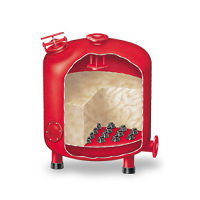
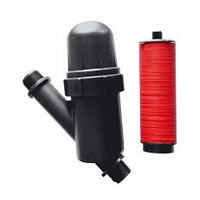
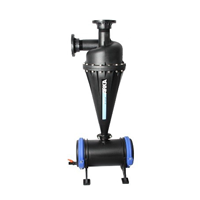
A hydrocyclone filter is installed to remove sand particles that may be present in a well. It operates on the principle of centrifugal force, during which larger sand grains settle at the bottom. Such filters require cleaning several times a day.
For normal operation, the filter requires water pressure from 2 to 3 atmospheres. For better cleaning control, a mesh or disk filter is installed after the hydrocyclone.
The names of the filters come from the first letters of the words. For example, filters labeled “FG-50” mean: gravel filter, and 50 — the throughput capacity (m³) of water per hour.
It is practically impossible to determine the filtration system on your own — it is better to entrust this to organizations that specialize in installing drip irrigation systems. Equally important is proper maintenance, including cleaning of the FPG — installers will also explain this.
Quality filters come with certificates of conformity and are made from high-quality metal with a polymer coating that protects them from corrosion.
As we can see — for small plots (6-10 hundreds), installing such expensive equipment is hardly reasonable; it is simpler and cheaper to water with a hose. But now we have a better understanding of the intricacies and the high cost of a drip irrigation system.
Drip Line Network and Automation System
Essentially, this is a system of closed plastic pipelines, where some—thicker ones—are laid across the rows of plants, and from them—through harpoon-type connectors—branch off so-called drip lines with water outlets—either slits or distribution pipes.
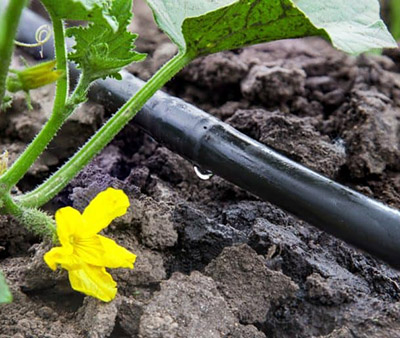
The main point here is the correct choice of the type of drip lines. This affects clogging. If you choose water outlets with a low flow rate (1.5–2.5 L/hour), they will be prone to quick clogging; with a high flow rate, puddles will form in soils with poor permeability. Professionals will determine the soil type and recommend optimal water outlets. The most resistant to clogging are the so-called emitter drip lines due to the creation of turbulent flows that clean deposits on the walls.
An important quality criterion for the lines is the wall thickness. It is often measured in units unfamiliar to us—“mil.” This word comes from the English “mil” (meaning “thousand,” since a mil is a thousandth of an inch). 1 mil = 0.001 inch. 1 inch equals 2.54 cm, so 1 mil equals 0.0254 mm (25.4 microns).
Such inconvenient numbers in millimeters and microns led to a more convenient unit for measuring the wall thickness of lines. All manufacturers have lines with wall thicknesses ranging from 5 mils (127 microns) to 15 mils (381 microns). The thinner they are, the cheaper they cost.
We do not recommend using lines thinner than 7 mils. With such wall thickness, bursts often occur, which negate all the advantages of drip irrigation when instead of delivering water to the root zone, a fountain or puddle forms around the line.
There are lines with seams (plastic rolled into a circle and welded) and seamless lines. The latter are much more resistant to bursts and more durable but also more expensive.Under the influence of sunlight, drip lines degrade over time. To extend their durability, a UV stabilizer is added to their outer layer. It is impossible to determine its presence by sight, but you can ask about it when purchasing or read about it in the documentation. At the same time, this increases the cost, and lines without UV stabilizers are cheaper.
Placement of Drippers
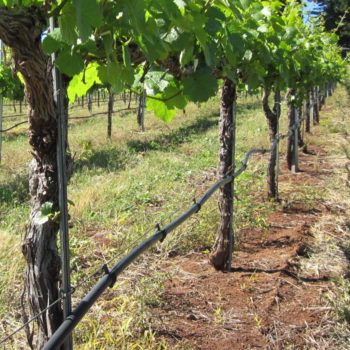
There are 3 ways to lay a network with drippers:
– on the soil surface;
– buried underground;
– placed on trellis wire, which is attached to tree trunks, at a height of 20-30 cm above the soil surface.
The first method is the most common but often interferes with work (there is a risk of snagging it with a hoe when removing weeds in the row zone) and sunlight still gradually degrades it over time. The buried option solves both problems, and in regions with mild winters, the lines can be left buried over winter. However, this option increases the costs of burying.
The option of attaching to tree trunks is intermediate and is found in gardening and viticulture.
The fourth element of the system is automation systems. If needed, a power supply unit and injector-type dosing pumps can be installed.
Such systems are mainly used by large-scale producers; for household plots, manual or semi-automatic control is usually sufficient.

What is needed for drip irrigation
In the photo:
- Repair coupling. It is used in case of a rupture in the drip line by cutting out the damaged section. If there are more than 2 ruptures per 10 meters, it’s advisable to replace the entire line. One of the main causes of ruptures is cheap lines with minimal wall thickness.
- Clogging of the emitter can occur in the absence of filters, due to the entry of sand particles or deposits on the inner walls of the lines.
- An example of lacking irrigation rate calculations.
- The thickest pipes are the main pipelines (laid across the plant rows), from which dozens of distribution pipelines – drip lines with emitters – extend via connectors.
- Connectors with filters and valves – additional equipment for the system’s operation.
The main advantages of drip irrigation are durability, water saving, the possibility of applying fertilizers and pesticides, ease of installation, and low cost. Therefore, drip irrigation is currently the best method for watering plants.
If you have found a spelling error, please, notify us by selecting that text and pressing Ctrl+Enter.

